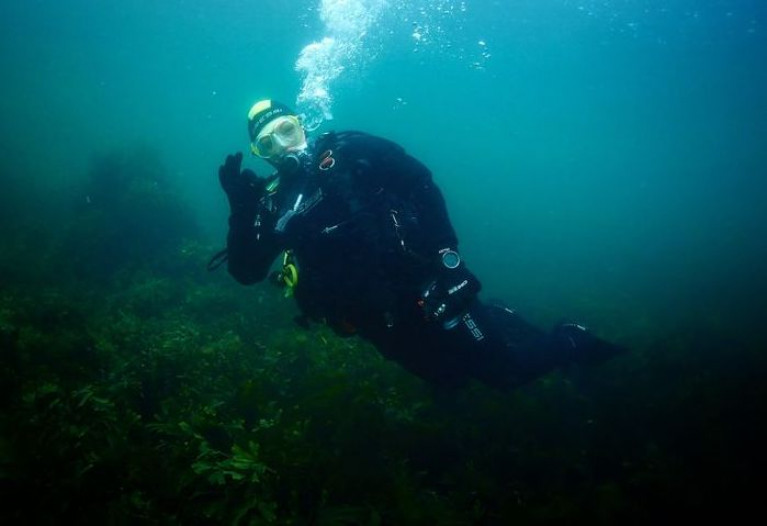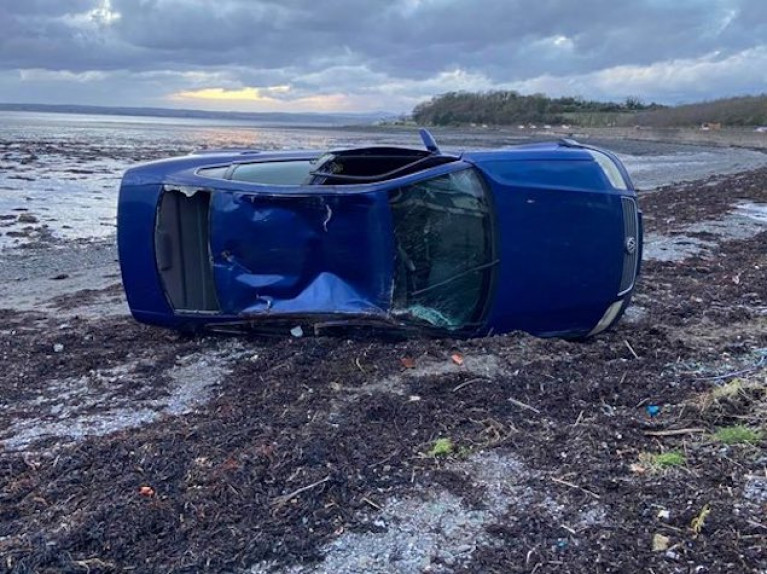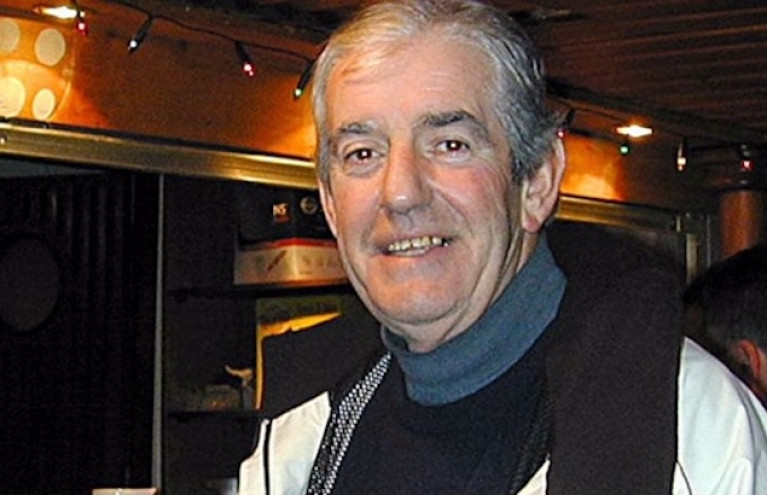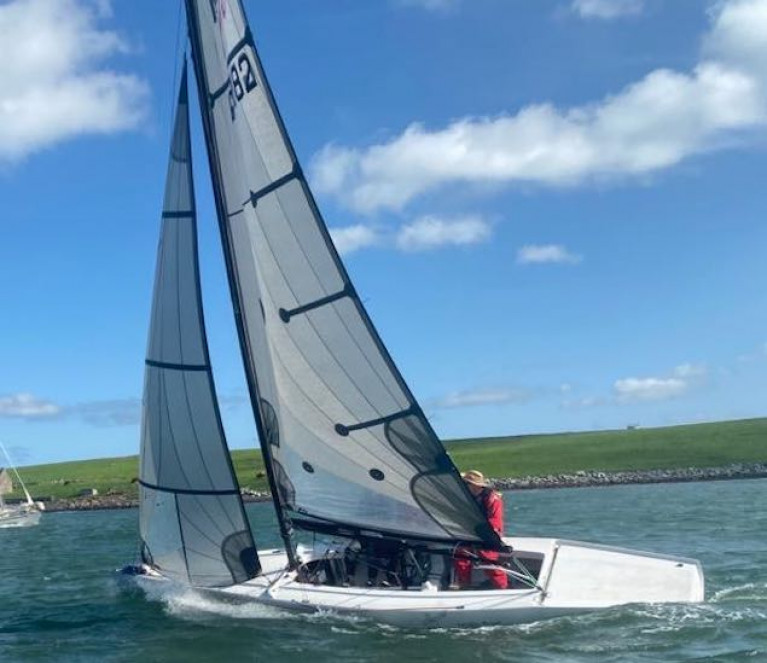Displaying items by tag: Strangford Lough
Exploris Aquarium in Portaferry on Strangford Lough has welcomed new residents. Fourteen Humboldt Penguins from the Curraghs Wildlife Park in the Isle of Man are settling well in their new home.
Exploris illustrates and exhibits the large variety of animals that live in Strangford Lough as well as farther afield. It was closed in late 2014 for refurbishment and reopened in 2016 following an investment of close to £1.5m and with the help of Crumlin Road Gaol Ltd, who are the operators. It attracts over 100,000 visitors each year.
The Humboldt penguin and the cold water current it swims in are named after the explorer Alexander von Humboldt. They are medium-sized penguins, growing to 56–70 cm long and a weight of 3.6-5.9 kg.
Portia Sampson, display supervisor said recently on Ulster Television. "They're from Curraghs Wildlife Park, which is in the Isle of Man. To get here, they've had to get on a ferry to the UK and then they've been driven up to Scotland and then across to Belfast and then they've been on a lorry to get us here, so it's taken them a good 20 hours to get to us." Aquarist Ester Scordmadlia added: "They are from South America, and we are very lucky to have this species of penguins because they can adapt very well to the environment. They are already enjoying the pool. They like to stay in the water, and they also like to jump. The six males and eight females will be named after Greek gods and goddesses".
During Lockdown, the staff continue with their daily responsibilities. Improvement works have also been taking place in anticipation of reopening to the public.
Portaferry Coastguard Rescue team was joined by the Bangor team for joint mud and water rescue training in Strangford Lough on Sunday, 28th February.
The Dorn at Ardkeen was the location for the mud training. The word Dorn, from the Gaelic word for narrow channel, refers to the channel which connects several sheltered bays to the Lough near Ardkeen on the eastern side of the Lough.
Cook Street Quay in Portaferry town was used for the water rescue training.
 Mud rescue training in Strangford Lough
Mud rescue training in Strangford Lough
The Portaferry team said, "It is essential that we keep our skills up to the highest level possible, so when required to conduct a technical rescue, we provide a first-class service".
Brendan Sharvin 1925-2021
The death of Brendan Sharvin of Strangford village at the age of 95 has taken from among us a remarkable man who was a leading figure in the development of sailing and boating in the southern part of Strangford Lough, a very special man of enormous charm and ability who combined a lightning wit with genuine kindness.
Born into the family pub-grocery in the village near the quay – later it became the Cuan Bar, but everyone knew it as Sharvin's - he was a host and entertainer of world-class, a master joke and story-teller whose beautifully-timed and appropriate anecdotes well-matched anything that even the most humorous of his many customers could produce, such that he was renowned as the best raconteur in Lecale.
But there was a quietly serious side to him as well. He reckoned that continuing to develop the neighbourhood's recreational interaction with the sea was essential, and he was a leading light in encouraging racing with the local punts fitted with sails which made up in the initial "dinghy fleet" of the 1946-founded Strangford Sailing Club and was then active in the group which own-built a fleet of fourteen Wychcraft sailing dinghies in the late 1950s.
 It's 1959, and the completion of Wychcraft sailing dinghy no 14 has to be marked with a celebratory stop outside Sharvin's, the beating heart of Strangford village. Photo: Courtesy SSC
It's 1959, and the completion of Wychcraft sailing dinghy no 14 has to be marked with a celebratory stop outside Sharvin's, the beating heart of Strangford village. Photo: Courtesy SSC
With the major up-grading of the car ferry across the Narrows to Portaferry, the boat-mooring space in Strangford Creek became much more restricted, and the Club – somewhat reluctantly – moved its operations base to the shores of Audley's Roads at nearby Castleward, where it now thrives.
But Brendan, having given many years to the family business, decided on a change of direction, and having sold the pub and stores, went to work in the Public Service in Downpatrick, eventually attaining a position of authority in the Housing Executive, which fitted well with his personal inclination for fulfilling a helpful role in society.
 Strangford village, Brendan Sharvin's home for all of his long life
Strangford village, Brendan Sharvin's home for all of his long life
Yet although he continued to live in Strangford, working from Downpatrick altered his sailing focus, and he became involved with the sailing cruiser fleet at the Quoile Yacht Club in the southwest corner of Strangford Lough, which had been developing rapidly with new big-boat facilities immediately seaward of the 1957-constructed Quoile Barrier.
For many years he was a regular shipmate from QYC with Colin Crichton on a variety of boats, starting with a Fred Parker-designed 26ft Mystere and graduating through several craft on which the two longtime crewmates cruised almost every summer weekend, with the Isle of Man a favourite destination among many ports.
In time, however, Brendan moved on to his own boat, a twin-keeled Westerly, and at the same time his organisational ability and willingness for voluntary work had been noted, and he was steadily moving up the management and committee structure of Quoile YC.
Nevertheless, he'd been retired from the day job for some time when he became a popular QYC Commodore twenty-five years ago. But in Brendan Sharvin's case, "active retirement" was inadequate to describe his continuing enthusiasm and all-round involvement at the age of 70, and his style of running meetings made them events to be cherished.
 A secret place. Quoile Yacht Club's base is a peaceful haven
A secret place. Quoile Yacht Club's base is a peaceful haven
That a man with such a wide circle of friends and a noted public persona should also have a profoundly fulfilled family life was almost a surprise to some, but his long and happy marriage to Agnes was blessed with six children who in turn have made them grandparents and great-grandparents.
And while we mourn the loss of someone who was great company ashore and afloat, and an able man in a boat with it, equally we recall those precious moments of long ago when you might sail into Strangford village on a quiet midweek summer evening, knowing that as you ambled up the quay to Sharvin's, the sound of laughter would be heard from within before you'd gone through the open door. Our heartfelt condolences are with Brendan Sharvin's family and his many friends, he was indeed a lovely man.
WMN
Strangford Lough Crime Thriller 'Bloodlands' Airs on BBC1
Bloodlands is a new crime thriller following DCI Tom Brannick, played by Co Antrim born actor James Nesbitt and filmed in Northern Ireland, principally in Strangford Lough.
It's a classic Jed Mercurio executive produced thriller written by Chris Brandon who having grown up in Strangford, knows the area well.
Strangford Lough from Old Norse Strangr Fjörðr, meaning "strong sea-inlet," is a stunning sea lough in east County Down. It is the largest inlet in the British Isles covering 150 sq km and reputedly has over 70 islands, one of which is a scene for the film. In 877 AD it was the scene of a battle between two groups of rival Vikings and now in Bloodlands the scene of an investigation into an assassin who has re-emerged after 20 years. A discovery on the Strangford Lough island helps him in the case.
 Strangford Lough - a stunning sea lough in east County Down is the latest Northern Ireland location for film companies
Strangford Lough - a stunning sea lough in east County Down is the latest Northern Ireland location for film companies
The location according to The Telegraph, has been kept secret as the owners of the island fear an influx of visitors, as happened after the filming of Game of Thrones at various locations in Northern Ireland when official tours took fans to the location sites.
According to The Telegraph, Director Pete Travis said that a conscious decision to keep the location secret was made after the owners of the original island location pulled out as they were nervous about it attracting tourists. He also said that the logistics of getting the crew to the chosen island was difficult but the production hired two local men to transport them. On the last day, treacherous weather forced the entire crew to be evacuated at short notice.
Bloodlands, an HTM Television production co-owned by Jed Mercurio airs on BBC 1 at 9 pm on Sunday 21st February.
Virtual Dives in Strangford Lough
As part of the Northern Ireland Science Festival this year, the Centre for Environmental Data and Recording (CEDaR) is offering two Virtual Dives which will take you on an underwater journey above the seabed in Strangford Lough.
The dates are Thursday 18th and Thursday 25th February at 7 pm. Both are free online virtual experiences and are accessible for viewers with hearing loss.
Strangford Lough in County Down is almost landlocked and is the largest sea lough in the British Isles covering 150 sq km. Through the 8km long Narrows opening onto the Irish Sea at the southeastern end, 350 million litres of water flow twice a day.
The Lough supports diverse and colourful marine species communities for which it is designated as a Marine Conservation Zone, perfect for exploring. Queen's University Marine Biology Centre is located in Portaferry on Strangford Narrows.
To find out more click here
Belfast Coastguard Responds to Car on Beach
Belfast Coastguard Rescue Team responded yesterday (8th February) to reports of a car which had left the road near Newtownards Sailing Club, just a few miles outside the town on the loughshore road to Portaferry There were three people inside.
A coastal rescue officer from Portaferry was one of the first on the scene and had started casualty care before the arrival of a Rapid Response Vehicle (RRV) Paramedic. No serious injuries were reported.
PSNI and Coastguard personnel from Bangor helped with traffic management as well as checking that the vehicle was not leaking any fluids that could pollute the area. The team was free to stand down as recovery was arranged for the vehicle by the Police Service.
As reported in afloat.ie on 14th January, another vehicle left the same road a few miles farther south.
Tom Watson 1944-2021
Tommy Watson was a popular senior member of the Down Cruising Club, known to many sailors in its hospitable home on the Lightship Petrel, which is permanently moored alongside – complete with pontoons – in the hidden anchorage of Ballydorn near Whiterock on Strangford Lough.
He joined the club shortly after the ship – which had been saved by DCC from the breaker's yard - arrived from Irish Lights in Dublin in 1968. Tom readily and willingly became involved in DCC's can-do co-operative approach, with which it successfully faced the challenges of fully developing its characterful facilities. Always ready to undertake voluntary work, he progressed through the ranks to serve as Commodore, and was subsequently elected as President.
 Down Cruising Club's ex-Lightship HQ has been in place at Ballydorn on Strangford Lough since 1968
Down Cruising Club's ex-Lightship HQ has been in place at Ballydorn on Strangford Lough since 1968
He was to own many boats, which he personally maintained to a high standard. His first was an unfinished Aquamarine 4/21 which he completed at home, and after a few years, he progressed to a Sabre 27. He then joined Russell Murphy, another senior DCC member, in co-owning the Nicholson 36 "Daiquiri", a 1963 classic. The club ran a series of cruiser-races, and despite no prior experience, Tommy and Russell became increasingly keen and were anxious to perform better.
Thus they asked the well-known local skipper Dick Gomes to join them as helmsman and tactician, and such was their success that the club imposed a 10% "jockey penalty" on their handicap, which irked them somewhat even if the rest of the club thought it was a compliment to their developing skills and "Gomesie's" special genius. Their links with him didn't stop there, as they often cruised "Daiquiri" on the West Coast of Scotland in company with Dick and Deirdre Gomes in their classic yawl "Ain Mara".
“In 25 years partnership with Russell, after 10 good years with Daiquiri they bought a Moody 39, and then an even more gentlemanly Moody Eclipse 39. He loved the excitement of looking at boats, and then getting involved with them, with his final two being an LM 32 Deck Saloon, and then a Rival 32. Being one of DCC's most senior members with more than fifty club years eventually under his belt, he was a "Dornocrat", with his moorings right in the Dorn itself, rather than in one of the outer anchorages which were to be brought into use as the club's fleet expanded.
During his long sailing career, he also joined other crews on the Mediterranean and Caribbean and, rather less glamorously, crossing the North Sea from Norway. Often known as "Watty" he was a great shipmate and always popular aboard, and dependable with it.
 For ten years, Tom Watson was co-owner of the classic Nich 36 Daiquiri
For ten years, Tom Watson was co-owner of the classic Nich 36 Daiquiri
Tommy was passionate about Down Cruising Club, taking an active part in every area of the club, and about Strangford Lough generally. He was a member of Ringhaddy Cruising Club, and of Portaferry Sailing Club, and an enthusiastic supporter of the local RNLI Lifeboat station. This encouraged him to buy a holiday apartment in Portaferry. It was while staying there that he collapsed and died when out walking with his wife Laraine on the Shore Road on 21st January 2021.
Many expressions of sympathy have already been sent to Laraine and their daughter Suzanne. His excellent and helpful company will be greatly missed by the Down Cruising Club members, particularly at the traditional Sunday evening gatherings in the idiosyncratic bar on the Lightship after the pandemic has been moved on, at those quietly special occasions when Tommy Watson's company was much appreciated in times past.
Strangford Lough is world-famous as the main arrival site for most of the migrating Canadian population (up to 80%) of pale-bellied Brent geese. Every autumn thousands of these birds leave their breeding grounds in eastern Canada and travel to Ireland to spend the winter. They leave Canada in late summer, travelling across Greenland, stopping off briefly in Iceland for a quick refuel before arriving in Ireland where they overwinter. Like their ancestors before them, most will arrive on the mudflats of Strangford to refuel on the nutritious eelgrass that grows in the intertidal sand and mudflats, although they will graze in the fields neighbouring the shore.
To protect these overwintering birds who arrive with their young, tired and hungry and in need of rest and food, the Strangford and Lecale Partnership has erected 'Share the Shore' panels in several sites around the Lough and at Killough Bay, (about 8km south-west of Downpatrick, on the County Down coast).
 'Share the Shore' panels are located in several sites around the Lough and at Killough Bay
'Share the Shore' panels are located in several sites around the Lough and at Killough Bay
The Share the Shore project out of a study in 2015/16 where the effects of dog walking on the bird population in Strangford Lough was monitored on a particular site – Greyabbey Bay on the east shore. From this study, it was concluded that a disturbance event affecting over-wintering birds occurs approximately once every hour. The data showed that most of this disruption is caused by dogs being walked off the lead and that excluding unknown and natural causes, off lead dogs cause the most severe response from the birds.
The birds have a small window to feed on the shore - as the tide goes out. Every time they are forced to take flight, they expend a great deal of energy and lose valuable feeding time. The panels give advice on dog walking to allow the birds to feed undisturbed.
 The panels give advice on dog walking to allow the birds to feed undisturbed
The panels give advice on dog walking to allow the birds to feed undisturbed
The six panels are located in Kircubbin, Cunningburn and the Floodgates on the east side; at Island Hill and Whiterock on the western shore and at Killough on the coast.
The message is " Please take the time to consider the advice on these panels and always keep your dog on a lead!".
The Strangford and Lecale Partnership's aim is to conserve the magnificent natural and built heritage for future generations. They work with, and for, local people to achieve prosperity and social well-being, particularly through heritage, tourism, and sustainable outdoor recreation.
RS Elites Take to the Water for The First Time for Frosties at Strangford Lough
Last Sunday was the first day's racing for most of the RS Elites this year as a result of a Covid-19 hit 2020 season. Five boats made it onto Strangford Lough with the hope of another couple joining next weekend.
Sailors were treated to a lively 20-knot easterly and sunshine. The first race started from the SLYC battery saw 4 boats in close contention upwind, there was a small misunderstanding about which was the correct windward mark which left a few boats reaching down to the laylines - Storm from RUYC led from Usain boat helmed by Richard Moore from RNIYC. Usain Boat had technical issues at the bear away stage and was overtaken by Illegal (SLYC)and Speedwell (RNIYC). Speedwell overtook Illegal on the 2nd beat whilst Storm maintained their lead.
Race 1
- Storm Stephen Polly
- Speedwell Ed Cody
- Illegal Phil Anderson
 Royal Ulster and Royal North of Ireland Elites getting ready for their first outing of the year at Strangford Lough
Royal Ulster and Royal North of Ireland Elites getting ready for their first outing of the year at Strangford Lough
The second race was run in a calmer 10-15 knot shifty Easterly. Again, Storm pushed out in front, leading from Speedwell, and Merlin (SLYC). A 45-degree left-hand wind shift lead to this being more of a drag-race with few overtaking opportunities. All crew enjoyed the sunshine and being out on the water again
Race 2
- Storm Stephen Polly
- Speedwell Ed Cody
- Merlin Angus McRoberts
Results here
Strangford Lough Uptake for All Ireland Coast Watch Survey
The All Ireland Coast Watch survey for 2020 starts on Tuesday 15th September and Judith Caldwell of the Strangford Lough and Lecale Partnership is confident that there will be uptake around Strangford Lough and is keen to promote and encourage local people to take part. The project runs until 15th of October.
The SLLP is a conservation body which looks after the magnificent natural and built heritage of the Lough and Lecale, the latter an area of historic and geographic significance, bounded by the Quoile River, the Blackstaff River, the Irish Sea and Strangford Lough. SLLP operates within the Area of Outstanding Natural Beauty (AONB), bringing together stakeholders and local interest with representatives appointed by the Department of Agriculture, Environment and Rural Affairs.
The Coastwatch Survey is designed to give an overview of the state of the coast. It involves volunteers from all walks of life checking their chosen 500m stretch of coast (survey unit) once around low tide, and jotting observations down on the survey questionnaire while on the shore. This citizen science work can be augmented with water tests. Data is then collected and pooled to provide a snapshot of state in areas surveyed at that time.
More information can be found here


































































